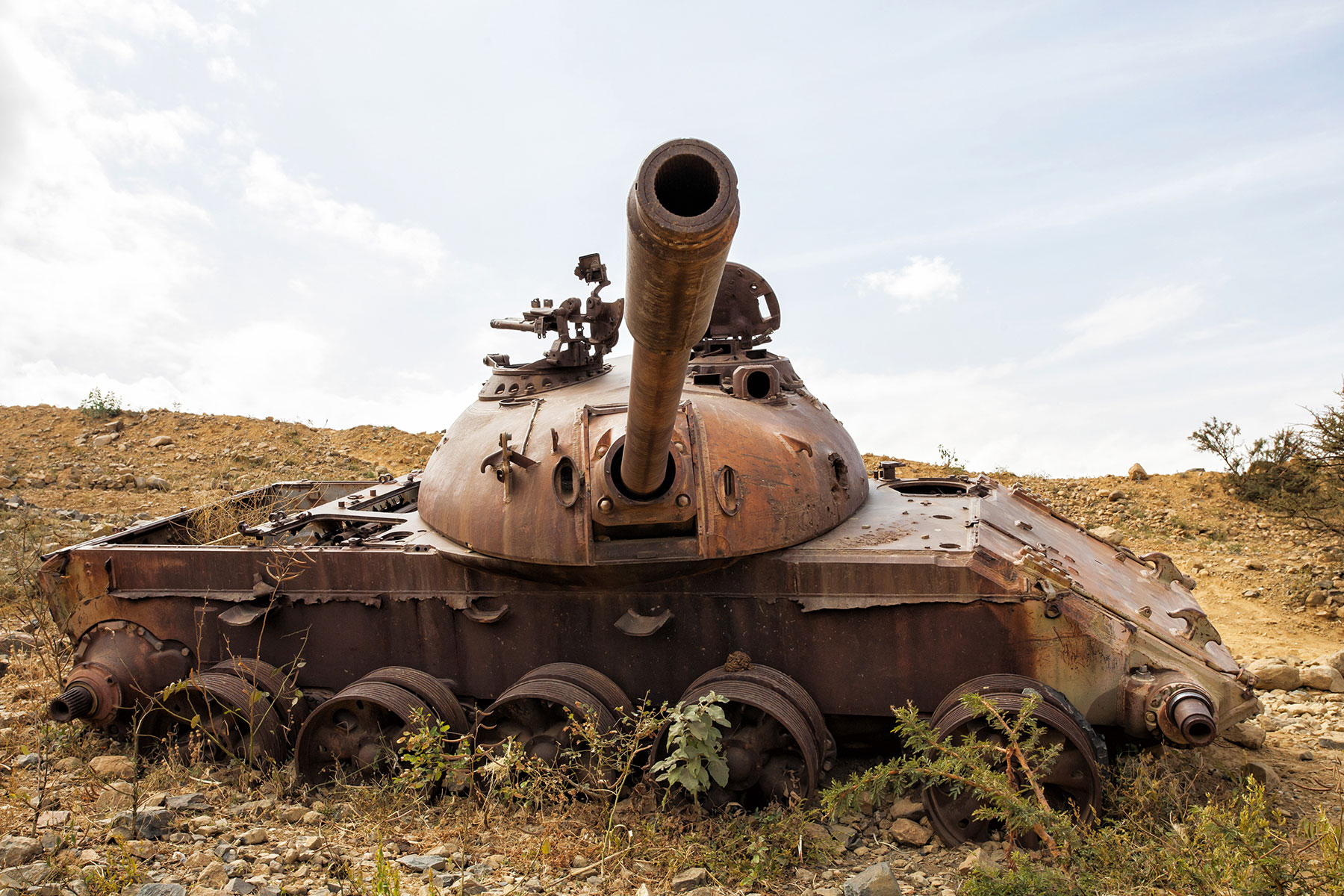US Secretary of State Antony Blinken is in Kenya on a mission that is critical to the future of the Horn of Africa. As the press release published at the start of the visit puts it, “the United States and Kenya are working together to address regional priorities, particularly ending the crisis in Ethiopia, fighting terrorism in Somalia, and restoring the civilian-led transition in Sudan.”
Of these, the conflict in Ethiopia is probably the most burning issue. The forces from Ethiopia’s northern Tigray region are advancing toward the capital, Addis Ababa, and panic is beginning to spread. The US has warned its citizens to leave now, saying that it will not repeat the evacuation from Afghanistan. Britain has echoed the warning while putting troops currently serving in Kenya on standby to assist.
Ethiopia’s Heavy Hand in Tigray Sends a Message
The Somali situation has remained unsolved since the collapse of the last central government with the fall of Siad Barre in 1991. Sudan’s struggle to overthrow the military who have seized power is critical but unlikely to spill over into neighboring states.
From the start of the war in Ethiopia’s northern Tigray region in November 2020, there were warnings that the conflict could lead to the collapse of the country, with catastrophic consequences for the region. The day after the war began, Johnnie Carson and Chester Crocker, both former US assistant secretaries of state for African affairs, put their names to a statement signed by some of America’s best-informed Africanists, warning that the conflict might lead to the “fragmentation of Ethiopia,” which would be “the largest state collapse in modern history.”
They suggested the consequences could be catastrophic, and their concerns are worth quoting in full:
“Ethiopia is five times the size of pre-war Syria by population, and its breakdown would lead to mass interethnic and interreligious conflict; a dangerous vulnerability to exploitation by extremists; an acceleration of illicit trafficking, including of arms; and a humanitarian and security crisis at the crossroads of Africa and the Middle East on a scale that would overshadow any existing conflict in the region, including Yemen. As Ethiopia is currently the leading Troop Contributing Country to the United Nations and the African Union peacekeeping missions in Sudan, South Sudan and Somalia, its collapse would also significantly impact the efforts by both to mitigate and resolve others conflicts in the Horn of Africa.”
Their warning was prescient. What began a year ago as the invasion of the northern region of Ethiopia has spread across large areas of the country. Maps of the fighting show areas across Ethiopia held by Tigrayan forces or fighters of their allies, the Oromo Liberation Army.
How Did the Tigray War Begin?
This is by no means simply a war between the Ethiopian government and Tigray. The conflict began with an attack on Tigray by Ethiopian federal forces, militia from the Amhara region, supported by invading troops from Ethiopia’s northern neighbor, Eritrea, as well as forces from Somalia. The Tigrayans had ruled Ethiopia for 27 years until being ousted by the current prime minister, Abiy Ahmed, in 2018. The animosity between them was predictable.
The Tigrayans, smarting from their loss of power, attempted to defy the new Ethiopian prime minister. They resisted attempts to remove heavy weaponry from the Northern Command (headquartered in Tigray’s regional capital, Mekelle, which they controlled). These weapons guarded northern Ethiopia (and Tigray, in particular) against any Eritrean attack. The Tigray People’s Liberation Front (TPLF) mobilized their citizens to block roads and prevent their removal.
However, the position of the Eritreans and Somalis requires some explanation. Tensions between Tigray and Eritrea can be traced to the liberation movements of the 1970s. Back then, the Tigray People’s Liberation Front and the Eritrean People’s Liberation Front (EPLF) had an uneasy alliance, working together to fight the Ethiopian government. This culminated in 1991 with the simultaneous fall of Addis Ababa and Asmara. The EPLF provided support to the TPLF in the assault on Addis Ababa and then gave close protection to the TPLF leader, Meles Zenawi. But this alliance hid ideological and tactical disputes.
The TPLF came to power, ruling Ethiopia via the Ethiopian People’s Revolutionary Democratic Front. By 1998, this relationship had ruptured and Eritrea and Ethiopia fought a bitter war that ended in 2000, leaving some 100,000 people dead. A peace agreement was signed in Algiers, but, much to the fury of Eritrea, Ethiopia refused to accept the border drawn by the boundary commission established by the treaty.
In response, Eritrean President Isaias Afwerki collaborated with the Somali Islamists of al-Shabab and Ethiopian guerrilla movements in a failed attempt to oust the Tigrayan rulers of Ethiopia. However, in 2018, internal factors finally saw the TPLF lose their grip on power in Addis Ababa, to be replaced by Abiy Ahmed.
Enter the Eritreans
Ethiopia’s Abiy and Eritrea’s Isaias believed they shared a common enemy in the Tigrayan military and political leadership. A series of initiatives led to an end to hostilities in 2018 between Eritrea and Ethiopia, a conflict that had simmered since the 1998-2000 border war. In a series of nine joint meetings by the Eritrean and Ethiopian leaders, they developed a joint strategy to rid themselves of the Tigrayans. It is instructive that their final visits were held at the military bases of Eritrea and Ethiopia.
Abiy canceled scheduled elections, arguing they could not be held because of the coronavirus pandemic. But his mandate had expired and the Tigrayans said he had no right to act in this way. They proceeded with their own elections, despite being instructed by the federal authorities not to. The last straw came when Abiy sent General Jamal Muhammad to take control of the Northern Command at the end of October 2020, only to have the TPLF put him on a plane back to Addis Ababa.
The federal government and the Tigray regional authority were clearly on a collision course. Exactly what happened on November 4 last year is not clear, but fighting broke out at the Northern Command base in Mekelle, which the TPLF took control of. Tigray was under attack from the north, east and south, with reports of drones, possibly supplied by the United Arab Emirates, fired from the Eritrean port of Assab in support of the Ethiopian government’s war effort.
This is not the “law-enforcement operation” described by Abiy. On November 6, 2020, he said in a tweet that operations “by federal defence forces underway in Northern Ethiopia have clear, limited & achievable objectives.” Six months later, this was hardly a plausible assessment. It had evolved into a full-scale war, which the Ethiopian government and its allies appeared to be winning. After an artillery bombardment of Mekelle, Abiy could rightly claim that his forces were in “full control” of Mekelle. He said that the army’s entry into the city marked the “final phase” of the conflict with the TPLF.
From Defense to Offense
In reality, the Tigrayans had pulled their forces out of the cities and had headed to the countryside and the mountains to conduct a guerrilla war — just as they had done before 1991. Mekelle had fallen, but the Tigrayan administration had ordered its forces to withdraw before the attack.
The UN, in a secret report, feared the war would become an extended conflict, characterized by irregular warfare. This is indeed what has transpired. By April 4, 2021, Abiy admitted that the fighting was far from over. Capturing the cities had not ended the war. Then, in June this year, the Tigrayans burst forth from the countryside, recapturing their capital, Mekelle, by the end of the month. Instead of leaving matters there, they continued pushing south, taking cities until Addis Ababa itself felt under threat, even though the Tigrayans are still many miles away.
The United States and European Union have been working with the African Union in an attempt to end the fighting. The US has imposed sanctions on Eritrea for its role in the war and threatened to extend these to Ethiopia and Tigray. Former Nigerian President Olusegun Obasanjo has acted as a mediator, visiting Mekelle as well as Addis Ababa. He has had limited success.
The burden of resolving this conflict now rests on the shoulders of Kenya’s President Uhuru Kenyatta. Whether he can succeed where others have failed remains to be seen.
The views expressed in this article are the author’s own and do not necessarily reflect Fair Observer’s editorial policy.
Support Fair Observer
We rely on your support for our independence, diversity and quality.
For more than 10 years, Fair Observer has been free, fair and independent. No billionaire owns us, no advertisers control us. We are a reader-supported nonprofit. Unlike many other publications, we keep our content free for readers regardless of where they live or whether they can afford to pay. We have no paywalls and no ads.
In the post-truth era of fake news, echo chambers and filter bubbles, we publish a plurality of perspectives from around the world. Anyone can publish with us, but everyone goes through a rigorous editorial process. So, you get fact-checked, well-reasoned content instead of noise.
We publish 2,500+ voices from 90+ countries. We also conduct education and training programs
on subjects ranging from digital media and journalism to writing and critical thinking. This
doesn’t come cheap. Servers, editors, trainers and web developers cost
money.
Please consider supporting us on a regular basis as a recurring donor or a
sustaining member.
Will you support FO’s journalism?
We rely on your support for our independence, diversity and quality.








Comment